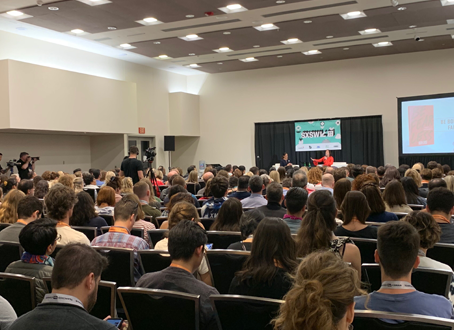This post was written by Nicola Beddow on behalf of the Case Foundation:
When it comes to raising funds and awareness for a good cause, some of the most popular events are ones that involve a little blood, sweat and tears. Marathons, distance biking, and run/walks top the list of charity athletic events. As co-founder and director of the Race for Hope 5k Run/Walk, I frequently get calls and requests for advice on organizing run/walks. I’m always happy to share experiences, resources and new fundraising ideas.
People are attracted to athletic fundraising events for many reasons – supporting a cause, getting in shape, accomplishing a goal and maybe even for the rewards that come from pain and suffering. In fact, Princeton University researchers Christopher Olivola and Eldar Shafir conducted a study at The Oppenheimer Lab that suggests people like to participate in fundraising activities that involve discomfort. Mr. Olivola attributed the results of the study to a phenomenon he dubbed the “martyrdom effect.” “When you have to work hard and suffer for a cause, then you become more involved and more motivated to help that cause,” he said. That could explain the appeal of charity triathlons, marathons and the latest craze: running up the stairwells of skyscrapers.
Fortunately, there are plenty of events for people at all fitness levels. The Race for Hope – DC, presented by Cassidy & Pinkard Colliers – a run/walk to benefit Accelerate Brain Cancer Cure and the National Brain Tumor Society draws over 8,000 participants, including many families. It’s inclusive – just about anyone can run or walk a 5k. The “martyrdom effect” can be seen at this level too. I often hear Race participants say “running or walking” is the least they can do in support of a loved one who has been diagnosed with a brain tumor.
Charity athletic events are growing in participation and dollars raised. According to the Run Walk Ride Fundraising Council, the top thirty “athon” programs generated more than $1.76 billion in gross revenue for charity last year, up from $1.64 billion in 2007 – a healthy 7.6% increase.
Here’s a look at the top five events from the Councils’ recent Run Walk Ride Thirty Study:
- $430.0 million…(+5.9%)…Relay for Life…American Cancer Society
- $125.5 million…(+0.4%…Team in Training…Leukemia & Lymphoma Society
- $115.0 million…(-0.9%)…March for Babies…March of Dimes
- $113.1 million…(+19.8%)…Race for the Cure…Susan G. Komen for the Cure
- $110.0 million…(+26.5%)…Breast Cancer 3-Day…National Philanthropic Trust
Of course, program executives who responded to the study expressed concern about the economy this year. They hoped to use two strategies to drive growth: increased corporate team recruitment followed by providing individual participants with tools to raise more funds.
Key elements to a successful race include: a passion for the cause, a core group of talented and committed volunteers, and online fundraising and awareness building tools.
Volunteers with experience in media outreach, sponsorships and team building will be critical to your success. No one can tell a story, land a sponsorship or build a team better than someone who has been personally impacted by the cause.
Hire a running company to handle permitting, logistics and timing.
Make sure you have an online fundraising strategy. Some nonprofits use online fundraising software like Blackbaud/Kintera or Convio, while others build their own custom websites. Sites like Firstgiving.com or Active.com enable individuals to raise money for their special cause as they participate in an athletic event not directly connected to a charity. Social media tools are extending the reach of athletic event fundraising, as well. Nonprofits and individuals have set up Facebook Fan pages and Twitter accounts to help spread the word about their run or walk. See how we’ve used these tools for Race for Hope:
A new and welcome trend is the “greening” of athletic fundraising events. The running community is leading the way. While it takes extra effort and the costs are not cheap, there are considerable environmental benefits. Races are recruiting additional volunteers to help manage the recycling of thousands of plastic water bottles, containers and paper cups. They are featuring organic t-shirts, bio-degradable bib numbers and compost bins for banana and orange peels. Race directors are cutting back on printed race materials and encouraging participants to go online for information and registration.
It’s never been a better time to get fit, go green and support your favorite charity!
Here’s some great resources links:
Guest blogger Nicola (Nike) Beddow is the Director of Events at Accelerate Brain Cancer Cure (ABC2), a Case Foundation partner organization.





